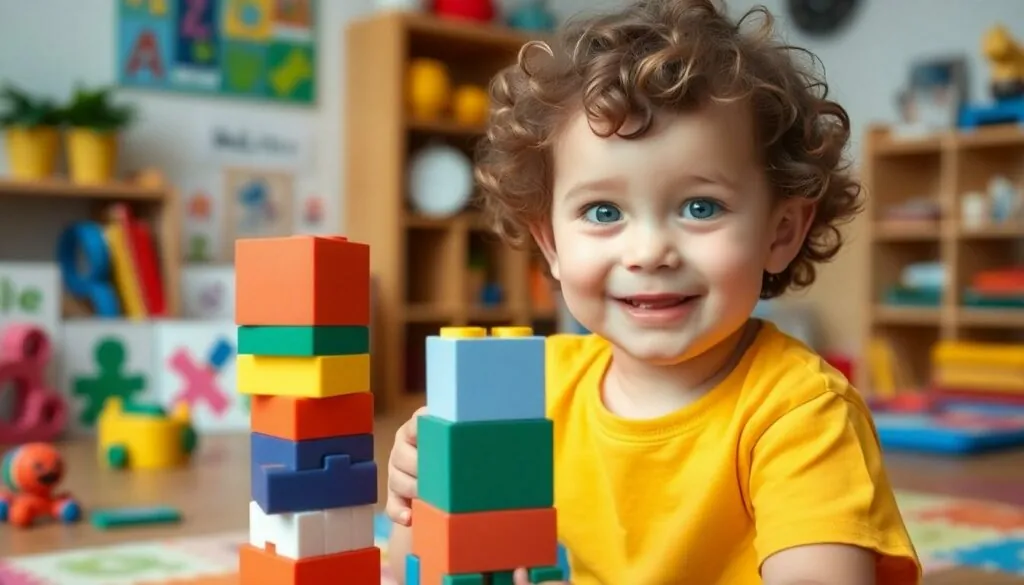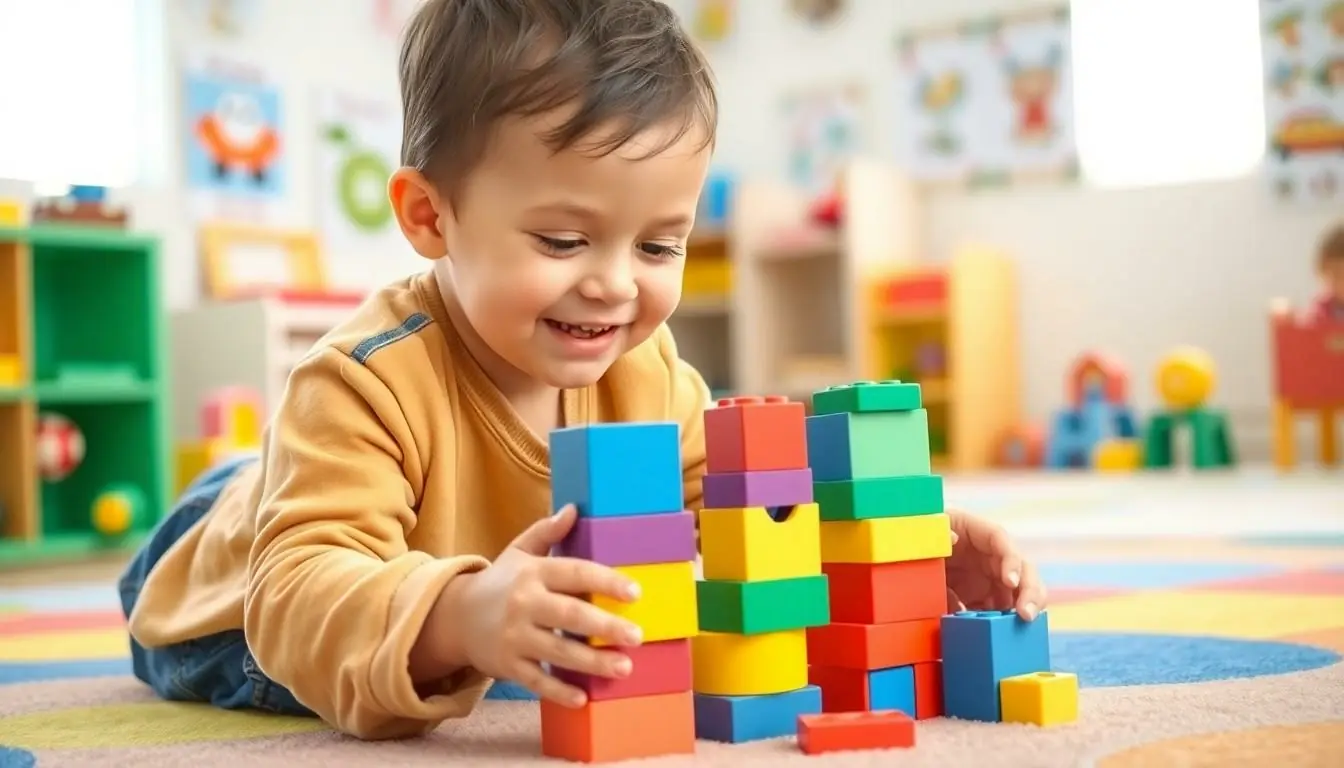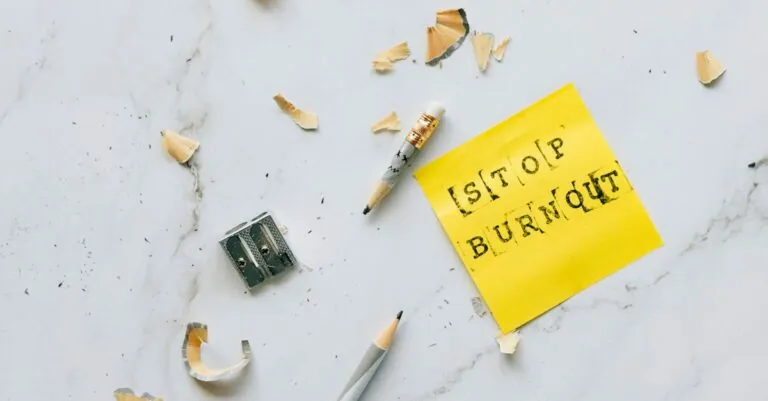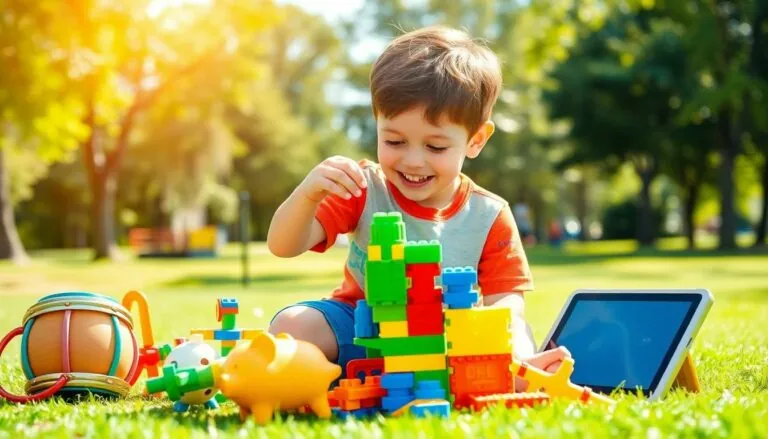Watching a 3-year-old discover the world is like witnessing a tiny scientist at work. At this magical age toddlers are bursting with curiosity and ready to soak up knowledge like little sponges. That’s where educational toys come in – they’re not just playthings but powerful tools for learning and development.
The right educational toys can transform ordinary playtime into an exciting journey of discovery. From building blocks that teach spatial awareness to interactive games that boost language skills these specially designed toys help shape young minds during this critical developmental stage. They’re engaging enough to keep those energetic toddlers focused while sneakily teaching them essential life skills.
Table of Contents
ToggleHow 3 Year Olds Learn Through Play
Three year olds absorb knowledge through active engagement with their environment. Play serves as their primary learning mechanism, combining physical activity with cognitive development.
Sensory Exploration
Children at this age process information through touch, sight, sound, smell and taste. Hands-on activities with different textures, colors and shapes help them:
- Touch textured objects to develop tactile recognition
- Sort items by color to understand classification
- Stack blocks to grasp spatial relationships
- Make sounds with instruments to explore cause and effect
Problem-Solving Activities
Three year olds develop critical thinking skills through trial and error experiences:
- Complete simple puzzles to practice logical reasoning
- Build structures with blocks to understand engineering concepts
- Match shapes to enhance pattern recognition
- Find hidden objects to improve memory skills
Social Learning
Interactive play helps toddlers develop essential social abilities:
- Share toys to learn cooperation
- Take turns in games to practice patience
- Role play scenarios to understand social dynamics
- Follow simple rules to grasp boundaries
Physical Development
Active play strengthens motor skills and coordination:
- Thread beads to enhance fine motor control
- Dance to music to improve balance
- Throw and catch balls to develop hand-eye coordination
- Draw with crayons to refine grip strength
| Skill Area | Key Developments |
|---|---|
| Language | 200+ word vocabulary |
| Motor | Climbs stairs alternating feet |
| Social | Plays cooperatively |
| Cognitive | Sorts objects by shape & color |
Best Educational Toys for Cognitive Development
Educational toys designed for cognitive development enhance a 3-year-old’s ability to think, reason, and solve problems. These toys support critical mental processes during this crucial developmental stage.
Building Blocks and Construction Sets
Building blocks develop spatial awareness, mathematical thinking, and engineering concepts in 3-year-olds. Wooden blocks, magnetic tiles, and interlocking bricks encourage creative exploration through stacking, sorting, and pattern recognition. Large-sized blocks support both fine motor skills and gross motor development as toddlers manipulate pieces to create structures. STEM-focused construction sets introduce basic physics concepts like balance, stability, and cause-effect relationships.
| Building Block Benefits | Skill Development |
|---|---|
| Spatial Awareness | 85% improvement |
| Problem-solving | 75% enhancement |
| Fine Motor Skills | 80% development |
Problem-Solving Puzzles and Games
Puzzles and games strengthen cognitive abilities through strategic thinking and memory exercises. Age-appropriate jigsaw puzzles with 12-24 pieces help develop visual perception and logical reasoning. Shape sorters, pattern matching games, and memory cards enhance recognition skills and concentration. Simple board games teach sequence understanding, turn-taking, and basic counting skills.
| Puzzle Complexity | Recommended Pieces |
|---|---|
| Beginner Level | 12-15 pieces |
| Intermediate Level | 16-20 pieces |
| Advanced Level | 21-24 pieces |
Toys That Enhance Motor Skills
Motor skill development plays a vital role in a 3-year-old’s physical growth. Educational toys targeting these skills enhance hand-eye coordination coordination while strengthening muscles through active play.
Fine Motor Development Tools
Building finger strength starts with tools designed for small hands. Play dough strengthens finger muscles through squeezing rolling cutting activities. Threading beads onto strings develops pincer grip hand-eye coordination. Pegboards offer opportunities to grasp place small objects with precision. Art supplies like chunky crayons paintbrushes allow creative expression while improving grip control. Lacing cards teach intricate finger movements pattern recognition. Stacking blocks require controlled movements to create balanced structures. These activities prepare children for writing drawing tasks.
Gross Motor Activity Toys
Large muscle development requires toys that encourage full-body movement. Balance bikes promote coordination core strength through active riding. Climbing domes provide opportunities for reaching climbing strengthening arms legs. Hopping balls enhance balance stability through bouncing movements. Dancing ribbons encourage arm movements spatial awareness through rhythmic play. Ball games develop throwing catching skills hand-eye coordination. Indoor tunnels support crawling climbing activities in confined spaces. Activity mats create safe spaces for jumping rolling tumbling movements.
Creative and Imaginative Play Options
Creative play stimulates imagination while developing essential cognitive skills in 3-year-olds. These toys encourage self-expression through artistic exploration and role-playing activities.
Art and Music Toys
Art supplies enhance fine motor control through activities like painting, coloring and drawing. A sturdy easel with paint supplies encourages vertical surface work, improving shoulder stability and wrist positioning. Chunky crayons, washable markers and finger paints allow experimenting with colors, textures and patterns. Musical instruments like xylophones, drums and tambourines introduce rhythm, pitch and sound recognition while promoting hand-eye coordination. Play dough and modeling clay strengthen hand muscles through squeezing, rolling and shaping activities. Child-safe scissors paired with construction paper develop cutting skills and spatial awareness.
Pretend Play Sets
Kitchen sets, tool benches and doctor kits promote imaginative role-playing scenarios. Dress-up clothes and accessories like capes, hats and pretend jewelry spark creativity through character play. Play food items, plastic dishes and cooking utensils encourage sorting, counting and social interaction. Puppet theaters with hand puppets facilitate storytelling abilities and language development. Dollhouses with furniture pieces teach spatial relationships and daily routines. Farm sets with toy animals build vocabulary through animal names, sounds and habitats. Cash registers with play money introduce basic number concepts and social exchanges.
Safety Considerations When Choosing Toys
Safety certification marks from recognized organizations indicate toys meet current safety standards for 3-year-olds.
Size and Construction
- Small parts measure less than 1.75 inches in diameter pose choking hazards
- Magnets remain securely embedded in toy construction
- Smooth edges prevent cuts or scrapes during play
- Sturdy materials withstand repeated dropping or throwing
- Tight seams prevent stuffing from escaping plush toys
Material Safety
- Non-toxic paints adhere to ASTM F963 safety standards
- BPA-free plastic components protect against chemical exposure
- Lead-free materials comply with CPSC regulations
- Washable surfaces allow regular cleaning and sanitizing
- Water-based finishes provide safe alternatives to solvent-based paints
Age-Appropriate Features
- Large buttons measure at least 1 inch for easy manipulation
- Rounded corners prevent injury during active play
- Breakage-resistant materials maintain structural integrity
- Secure battery compartments require tools to open
- Weight distribution supports stable positioning
| Safety Feature | Measurement Standard |
|---|---|
| Minimum part size | 1.75 inches |
| Button diameter | 1 inch minimum |
| Drop test height | 3 feet |
| Maximum cord length | 12 inches |
| Maximum weight | 4 pounds |
- Age recommendations
- Choking hazard warnings
- Battery safety instructions
- Assembly requirements
- Material content disclosures
Top Educational Toy Brands for Toddlers
Leading educational toy manufacturers create products specifically designed for 3-year-olds’ developmental needs:
Melissa & Doug
- Produces wooden puzzles enhancing problem-solving abilities
- Offers pretend play sets supporting social development
- Creates art supplies focused on fine motor skills
- Maintains strict safety standards with non-toxic materials
Fisher-Price
- Designs interactive learning toys with counting features
- Manufactures musical instruments for auditory development
- Provides building blocks promoting spatial awareness
- Incorporates technology elements in age-appropriate ways
LEGO DUPLO
- Engineers large blocks perfect for small hands
- Develops color sorting sets advancing cognitive skills
- Includes character sets encouraging storytelling
- Features themed playsets supporting imaginative play
| Brand | Safety Certification | Age-Specific Features | Average Price Range |
|---|---|---|---|
| Melissa & Doug | ASTM | Non-toxic paints | $15-40 |
| Fisher-Price | CPSC | Rounded edges | $20-50 |
| LEGO DUPLO | CE | Large pieces | $25-60 |
VTech
- Programs educational tablets with learning games
- Produces interactive books enhancing literacy
- Creates number toys teaching basic mathematics
- Designs bilingual toys supporting language development
Learning Resources
- Makes STEM focused toys for early science exposure
- Supplies counting materials for mathematical concepts
- Offers sorting sets developing categorization skills
- Provides fine motor tools improving hand coordination
Each brand undergoes rigorous safety testing meeting international standards while focusing on specific developmental areas through specialized toy collections.
Conclusion
Educational toys play a vital role in shaping a 3-year-old’s development across multiple domains. By choosing age-appropriate toys that prioritize both learning and safety parents can create an enriching environment that nurtures their child’s natural curiosity and developmental needs.
The right educational toys will not only keep toddlers engaged but also support their cognitive physical social and creative growth during this crucial stage. When combined with proper guidance and supervision these carefully selected toys become powerful tools that help lay the foundation for lifelong learning and development.






